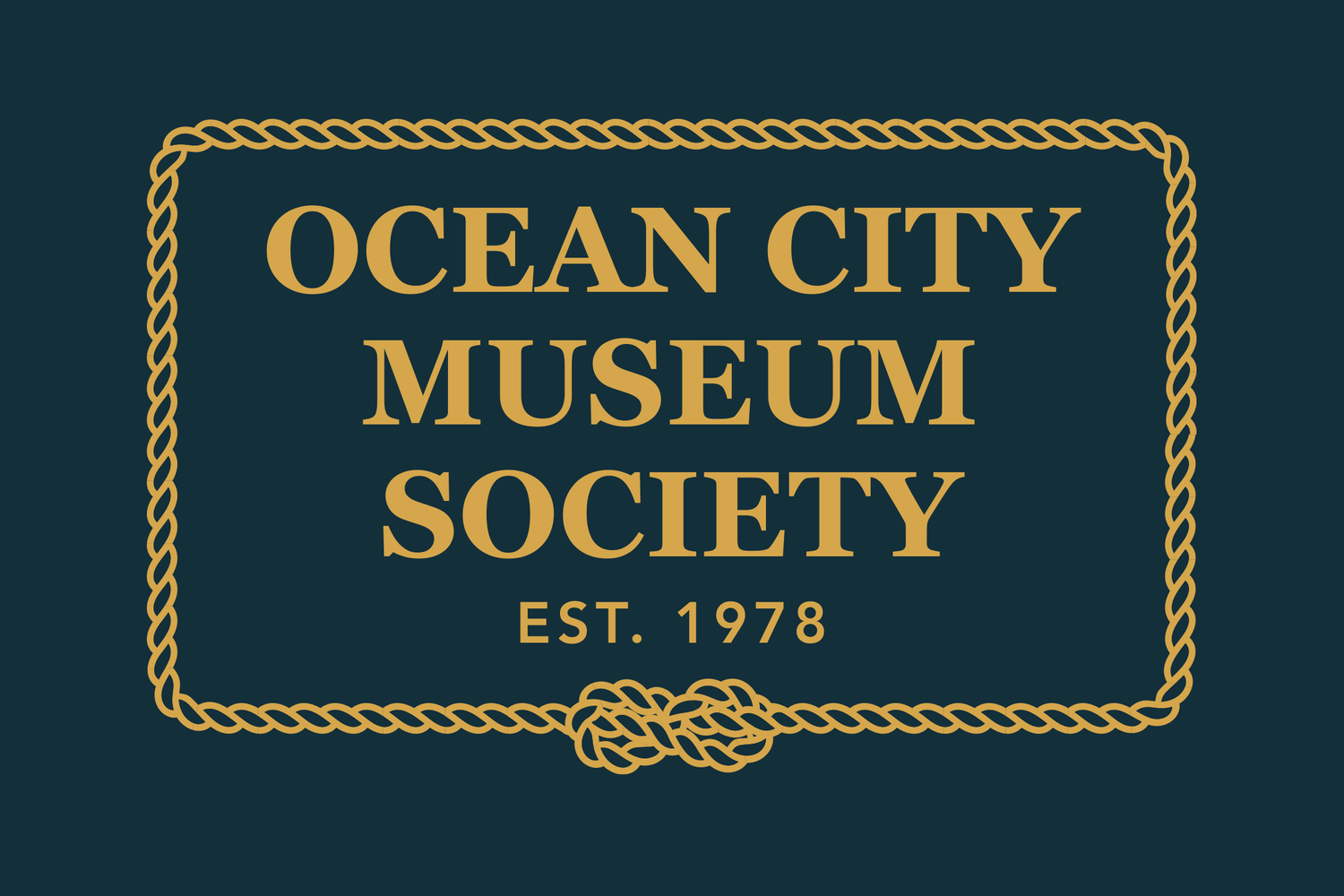The Stranding of the Bark Maddalena Secondo
At Cedar Island, Virginia 1882
by George and Suzanne Hurley
1984
Wachapreague-Cedar Island, Virginia
The Wachapreague Life-Saving Station was commissioned in 1875. This is the second station to be built on Cedar Island. This station house was destroyed during the Storm of 1933. The building no longer exists. This station responded to sixteen major shipwrecks.
Photograph collection of Annie P. Quillen
On December 4, 1882, a gentle northerly breeze blew down the beach as the surfman from the Cedar Island Life-Saving Station made his lonely way on foot along the surf. It was 4:00 a.m., and in the predawn darkness the patrolman caught a glimpse of a phantomlike shape beyond the breaking surf. Hurrying along until he was at a point nearly opposite the form, he was able to make out a bark aground on the bar about a mile northeast of the station and about a quarter-mile from the island. Quickly igniting a red Coston flare, he signaled the vessel that she had been discovered and hurried toward the station to alert Keeper John B. Whealton and his lifesaving crew.
Keeper Whealton and his crew immediately launched the surfboat and pulled for the bark. She was the Maddalena Secondo of Genoa, Italy bound from Montevideo to Baltimore with a cargo of dry bones. By six o'clock, the lifesavers were alongside the stranded vessel. They found that the crew was completely Italian, except for two English sailors. It was quickly obvious that the captain and crew were drunk and abusive, all refused to be taken ashore, with the exception of the two English sailors. The surfmen pulled back to the island with the two sailors and beached their boat opposite the stranded ship.
At noon, the keeper observed that the ship's crew was preparing to come ashore in the Maddalena Secondo's own boats. Whealton, fearing the usual deadly consequences of this folly, at once ordered a launch and arrived alongside in time to head off the movement. He was to take the seven remaining men of the crew and the one passenger ashore. The captain and second mate still refused to leave the vessel.
At 3:30 p.m., as the weather began to show signs of worsening, the keeper became worried for the safety of the bark's crew, and again launched the surfboat. Despite his earnest entreaties, the captain and second mate obstinately declined to be saved, and the keeper had to put back again from a fruitless errand. At 7:00 p.m., a signal was displayed aboard the Maddalena Secondo, and the keeper once again had his men launch and pull to the vessel, boarding it upon their arrival. It was unclear as to why they had been signaled to launch in the winter darkness and in the rising and perilous sea, for the captain and mate were obviously still very drunk and resolutely bent upon remaining aboard the stranded vessel. Keeper Whealton's blood was up, however, and he was now determined to land them if he had to tie them up to put them into the surfboat. The mate was easy to deal with, but it was not without some difficulty that the intoxicated captain was forced over the side and into the surfboat. Once in, he made a frantic atsitet to scale the side of the hull to get back to the deck. When the rescuers pushed off, however, he subsided, and after a weary struggle through many lines of breakers all hands from the bark were safely delivered to shore.
On he next day (December 5), a wrecking steamer arrived and the lifesaving crew launched the surfboat and delivered the captain to the steamer to negotiate terms for having his ship refloated. By December 13, the wreckers had the bark afloat and made ready to tow her to Norfolk for repairs. Al the while, Whealton and his men had kept the vessel and its crew under constant surveillance in the event they were needed once again. Ten of the men stayed at the station during the entire time that was required to re-float their ship.
So ended the ordeal of the Maddalena Secondo. The stranding of the vessel could only be attributed to an intoxicated crew misjudging the location of the entrance to the Chesapeake Bay, and, in the stupor of alcohol, running their vessel aground on Cedar Island. They were indeed fortunate that December of 1882 was a mild month.
Copyright 1984 Shipwrecks and Rescues: Along the Barrier Islands of Delaware, Maryland and Virginia by George M. and Suzanne B. Hurley. All Rights Reserved.


